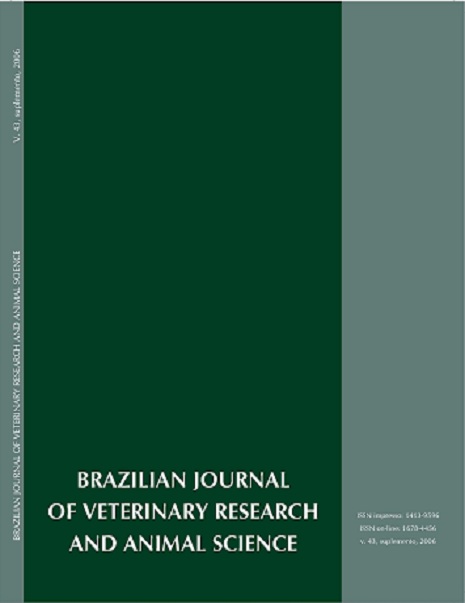Induction of puberty and following estrus synchronization in prepubertal gilts using exogenous gonadotropins
DOI:
https://doi.org/10.11606/issn.1678-4456.bjvras.2006.26532Keywords:
Gilt, Gonadotropin, Puberty, SynchronizationAbstract
The utilization of exogenous gonadotropins in the puberty induction and estrus/ovulation synchronization is a management that influence positively gilts handle, to the better effectiveness and economic inclusion of gilts in the Intensive Swine Production System herd. However, few researches have been developed to evaluate the subsequent estrus synchronization after puberty induction. Thus, the aim of this study was to verify the subsequent estrus synchronization after the hormonal puberty induction and to evaluate the inducted and the following one estrus characteristics. Sixty six prepubertal gilts had their puberty inducted by a hormonal combination using gonadotropins (eCG and LH) at 145 days old, in average. A total of 35 (52,03%) of the 66 initially gilts showed estrus up to seven days after LH administration, and 40 (60,60%) had the subsequent estrus synchronized (synchronization was defined as the gilts which showed estrus up to day 25 after LH administration). Twenty six gilts (39,39%) showed the first and second estrus. The 26 (39,39%) remaining gilts that didn't show the second estrus synchronized were slaughtered, which 15 presented corpus albicans and/or corpora lutea and 11 were considered immature because they didn't present any structure mentioned above in the ovaries. There was no significant difference between the puberty estrus duration and the subsequent estrus duration (P>;0,05), neither their dispersion.Downloads
Downloads
Published
2006-12-03
Issue
Section
UNDEFINIED
License
The journal content is authorized under the Creative Commons BY-NC-SA license (summary of the license: https://
How to Cite
1.
Vianna WL, Pinese ME, Rosseto A de C, Oliveira CA de, Moretti A de S. Induction of puberty and following estrus synchronization in prepubertal gilts using exogenous gonadotropins. Braz. J. Vet. Res. Anim. Sci. [Internet]. 2006 Dec. 3 [cited 2025 Apr. 3];43(supl.):28-32. Available from: https://revistas.usp.br/bjvras/article/view/26532





